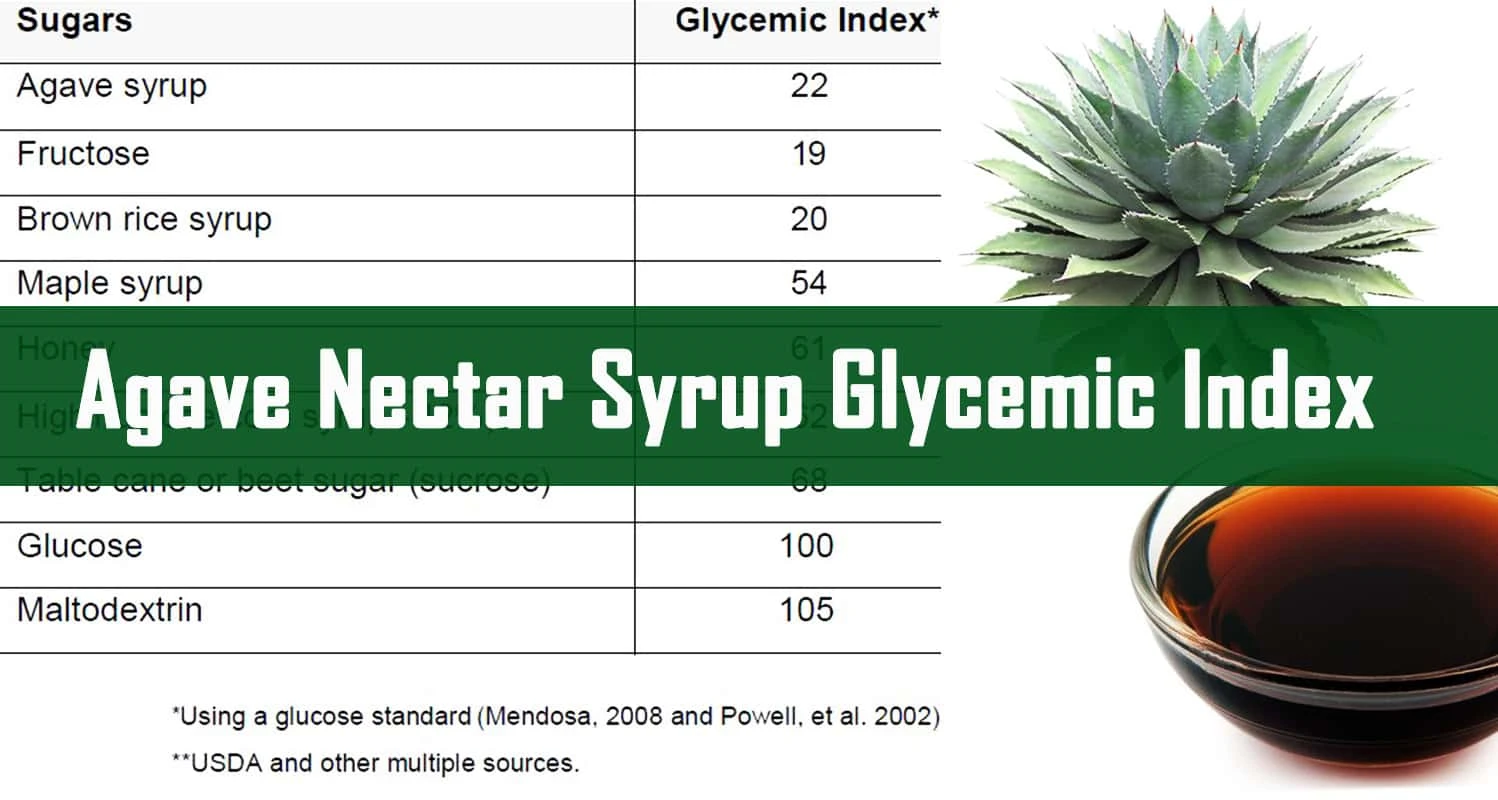reviewed by Truman Perkins
Agave syrup is a liquid sweetener derived from the agave plant. It has been used in Mexican cooking for generations and has recently grown in popularity due to its low glycemic index. The glycemic index of agave syrup ranges from 30-55, significantly lower than sugar (64) or honey (60). This makes it an ideal sweetener for those with diabetes or those looking to lose weight following a ketogenic diet.
Contents

The glycemic index measures how quickly the food you eat turns into sugar in your bloodstream. The higher the number, the more quickly this happens.
The glycemic index can tell you whether or not a portion of food will affect blood sugar levels. It also assists in weight loss and diabetes management because it helps regulate blood sugars, which are partially responsible for hunger and cravings. This article will explore what glycemic indexes mean and offer some tips on using them to reach your goals!
The Agave Syrup glycemic index is a way of measuring foods’ relative impact on blood sugar levels. Foods with a high glycemic index have carbohydrates that the body can quickly convert to sugar, making them more likely to cause a quick rise in blood sugar. For example, many popular diets (Atkins and South Beach) include food choices based on the glycemic index.
To determine the glycemic index of a food, human subjects are given a portion of a single food, and their blood sugar is tested at intervals. Compared to a control substance (glucose or white bread), the resulting response curve is assigned a numerical value. Glucose (or white bread) is given an arbitrary rating of 100, and all other foods are measured relative to that. Foods that rate above 100 are foods whose carbohydrates digest quickly and are likely to immediately raise blood sugar, while those with an index lower than 100 have less impact on blood sugar.
Foods with few to no carbohydrates, like meats, cheeses, and fats, will likely result in a glycemic index close to zero. The fewer easily-digested sugars and starches a food contains, the less likely it is to create a spike in blood sugar. While classified as a carbohydrate, dietary fiber passes through the system undigested, so it has no impact on blood sugar. Fiber works to help slow the absorption of digestible carbohydrates.
You can use The glycemic index of individual foods as a guideline for meal preparation. Still, since most of us do not make an entire meal of one eats, the stomach interaction must also be considered.
Some foods act to reduce the overall glycemic level of a meal. Similar to the effect of dietary fiber, fats consumed with a higher glycemic food can also help to curb its blood-sugar-raising property. Likewise, vinegar has been found to inhibit the digestion of starches in the stomach. So, for instance, starting your dinner with a salad dressed in Italian dressing (fiber + fat + vinegar) should lessen the impact of high glycemic foods in the meal.
Like the glycemic index, the glycemic load of a food is used to characterize its potential blood sugar effect. A portion of food may have a high glycemic index, meaning the carbohydrate it contains will quickly convert to sugar. Still, if that food does not contain much carbohydrate per average serving, there will not be much impact on the blood sugar.
To calculate the glycemic load of food, multiply its glycemic index by the number of digestible (non-fiber) carbohydrates in a single serving, then divide by 100. That number may be interpreted as follows:
| food | carbohydrates | x | glycemic index | ÷ | 100 | = | glycemic load |
| 12 oz. regular cola: | 40.5 | x | 90 | ÷ | 100 | = | 36.4 |
| fresh apple (medium) | 21 | x | 54 | ÷ | 100 | = | 11.3 |
| 2 Tbsp. agave nectar | 32 | x | 30 | ÷ | 100 | = | 9.6 |
One can see that even though the apple has fewer carbohydrates, the glycemic load of the agave nectar is lower.
 |
 |
 |
 |

About Truman Perkins
Truman Perkins is a Detroit-based SEO consultant who's been in the business for over a decade. He got his start helping friends and clients get their websites off the ground, and he continues to do so today. In his free time, Truman enjoys learning and writing about gardening - something he believes is a natural stress reliever. He lives with his wife, Jenny, and their twins in Detroit.
 |
 |
 |
 |
Check These Out
Get new FREE Gifts. Or latest free growing e-books from our latest works.
Disable Ad block to reveal all the links. Once done, hit a button below
 |
 |
 |
 |